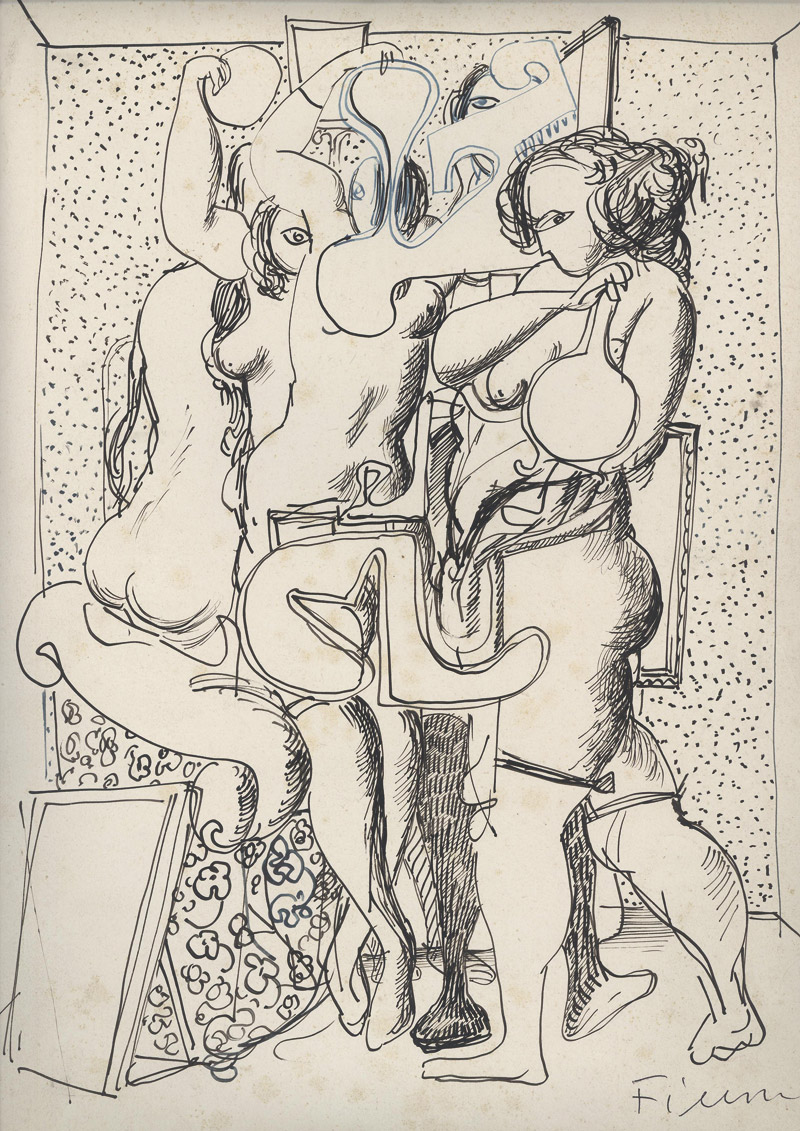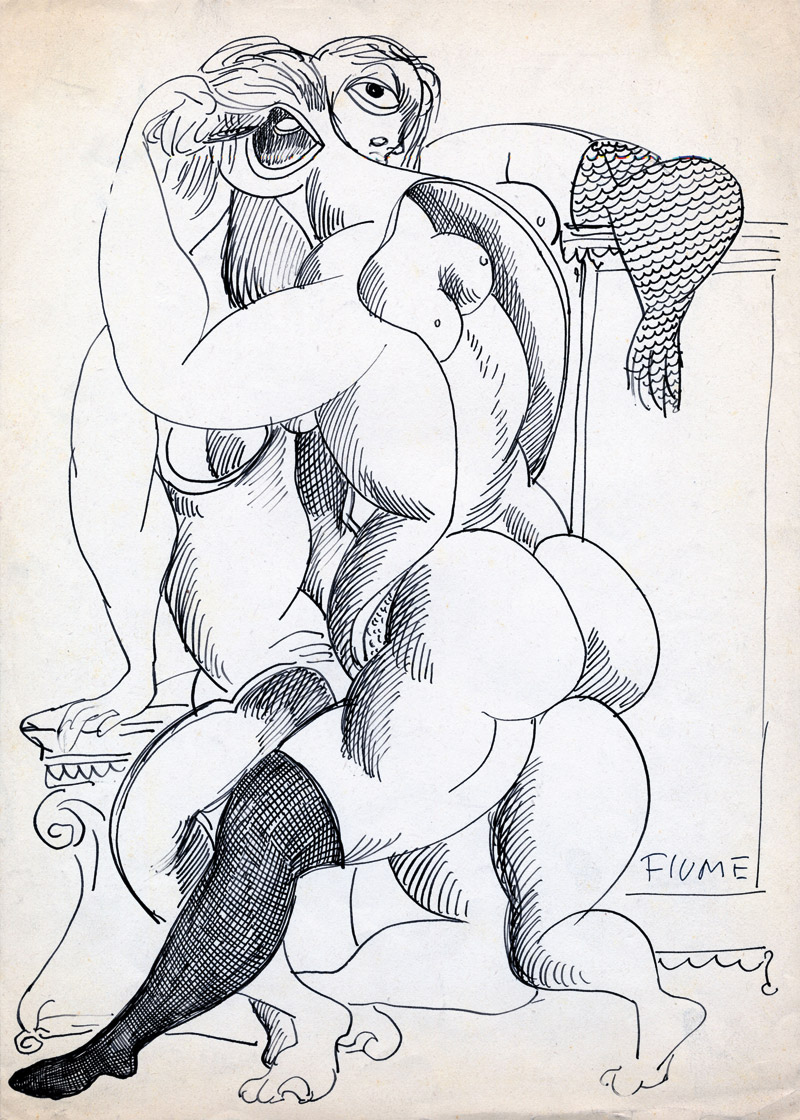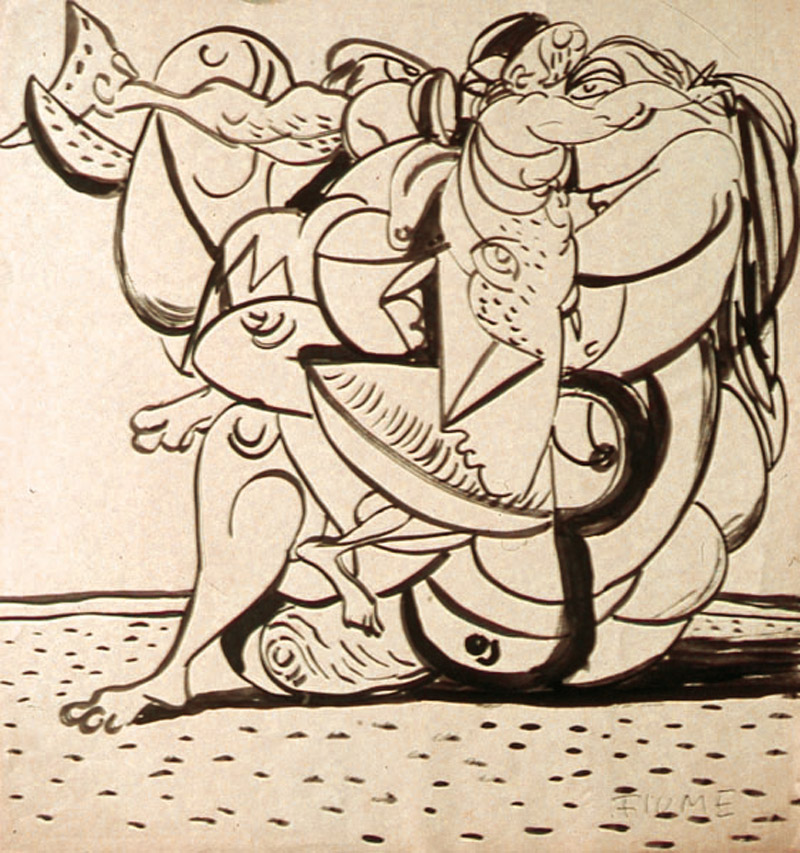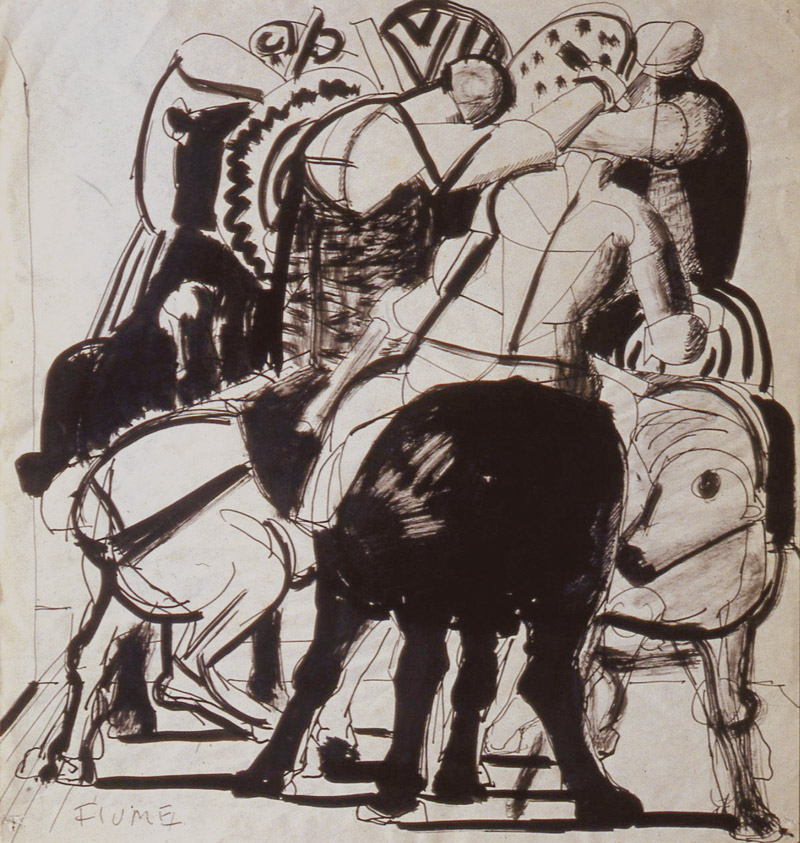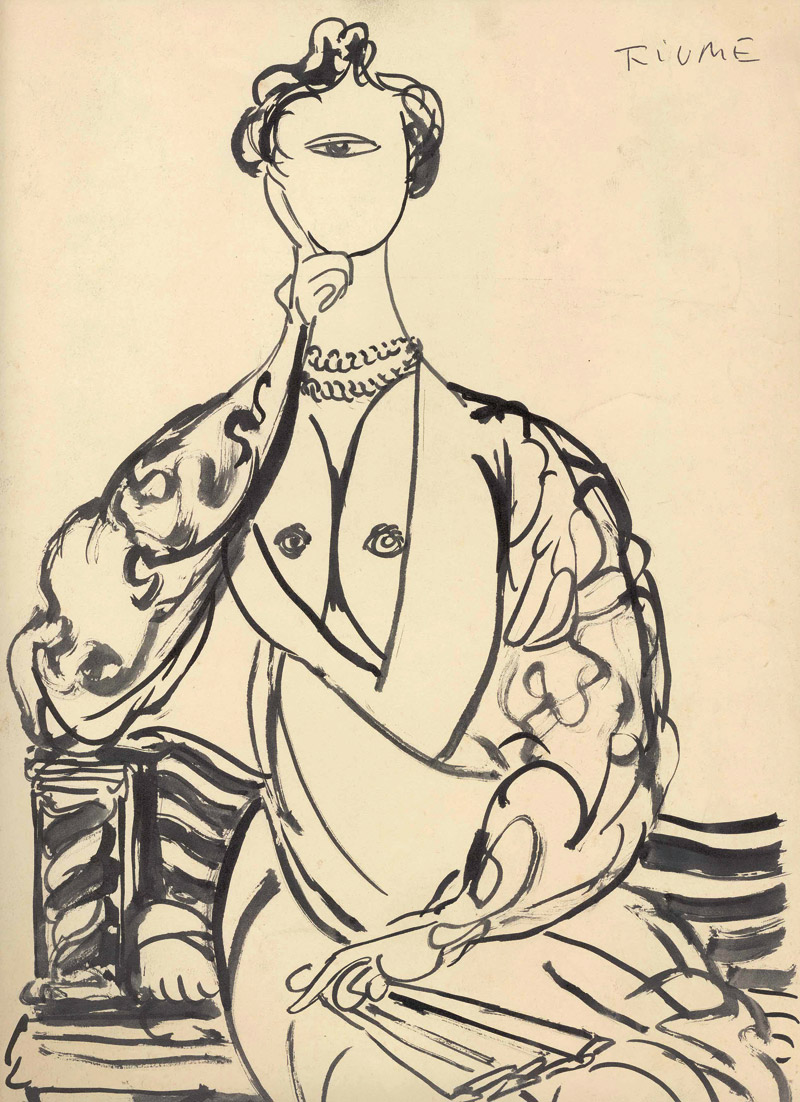METAPHYSICAL DRAWINGS
1940s
These drawings from the 1940s belong to the Italian Metaphysical tradition. When he first saw them in 1946, Alberto Savinio was enthused by them and he later proposed and obtained Fiume’s participation in the 1950 Biennale of Venice.
TESTI CRITICI
from Fiume
Edizioni Brera Galleria d’Arte
second print, 1976
When he came to see me for the first time many years ago, Fiume had a tube of drawings with him in Indian ink, a dozen examples. They were the first things of his that I saw: there was already all of him in that work, tangled, explosive, humorous, acrobatic, multi-faceted. Right from the first moment they communicated to me an irrepressible excitement. That same evening I rang Savinio who at the time lived in via Plinio. My friend came round the next day and we were both excited. But the electrifying talent of Salvatore Fiume is in his painting and not outside. His pictorial material is garbed in the extraordinary adventures of shapes with a powerful and unexpected flow which creates in them the expression of an extreme vitality. I am tired of painters that pose as thinkers and live off concepts and prejudices. And also of those who change programme every three months. I do not like them to be stubborn or rough. And I do not like them quibbling, disinfected. Every now and again there is one that I like. That one has to be a natural man, as open as possible. It is better, much better, if that one is like Fiume, more warm than cold, and does not practice painting like chemistry, but is in turn wise and mad, believing and faithful to his own ideals, never sceptical, never restricted…
from Salvatore Fiume, drawing as a vocation
Salvatore Fiume. Cento disegni
Téchne Editore, 2001
An accurate chronological, thematic, and stylistic analysis of Salvatore Fiume’s graphic work allows us to state without doubt that he has been one of the greatest draftsmen of the XX Century. The constant and unique freshness of his fantastic inventiveness; the ingenious, multiform richness of themes and subjects; the exact pertinence of his inventions and technical solutions; and – as a foundation of all that – the human and cultural density of Fiume’s artistic experience allow us, although only a few years have elapsed since the master of Comiso’s departure, to assign him to the small galaxy of the great contemporary successors of the historical tradition of European draftsmen, beside Picasso, Dalì, Moore, Marino and most of all, beside Max Ernst, de Chirico, and Savinio…
PAOLO LEVI
…The corpus of his drawings, an extraordinary revelation of his creative genius, places the figure of Salvatore Fiume at the same level as the greatest European artists of this century… When Salvatore Fiume is inspired by the geometries of Paolo Uccello, the graphical-cubist exercises of Picasso, certain themes from Goya, by the surreal games of de Chirico and Savinio, his work is never imitative. Rather, it seems willingly to leave its boundaries, the traditional themes, like the cities of statues, the coloured models, the islands, to hold a conversation on equal terms with these masters, spiritual fellow travellers; it is as if it were a kind of competition, trial, to show his autonomy, to defend his own identity…
FLAMINIO GUALDONI
…Thus, in a totally autonomous manner Fiume proposes (while an artistic debate proceeds in increasingly sterile controversies between figurative art and abstraction) another way of being, an approach that Aretino and Vasari would have meant to be, “anciently modern, and modernly ancient”. And this could be, as Ponti cleverly perceived, the authentic Italian way within modernity, the modernity advocated and attempted in various ways entre deux-guerres but only occasionally seen, and above all only occasionally understood: that “different modernity” which, about a decade later, a figure like Aldo Rossi could indicate in Sironi’s constructionism, and whose necessity Fiume appears to deploy with an already mature and non problematic self- assuredness…. Well before the pop culture implemented the same practices from the point of view of cynicism and of image manipulation, Fiume tries neither an epigonal nor a nostalgic way, but rather a loving one, so as to become, as was well noticed by Savinio, one of the rare authentic heirs of the classical recovery that had taken place in previous decades. In support to this choice of his are some personality traits, and vocations, which impose themselves on the artist with the force of necessity. When Raffaele Carrieri summarises his profile as “entangled, scathing, playful, acrobatic, multi-faceted”, when he speaks of his painting as a “powerful and sudden flow” reaching “an expression of extreme vitality”, he is warning that Fiume does not belong to the line, which in those decades was more and more flourishing, of artists burdened with concepts and at the mercy of theories and ideologies, and much less to the line of those who interpreted the healthy notion of discipline as a kind of Savonarola rule of aesthetics…

